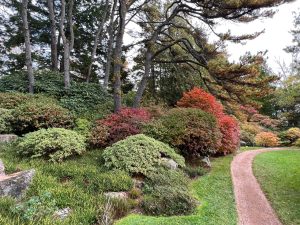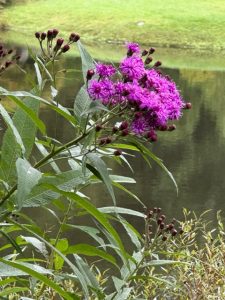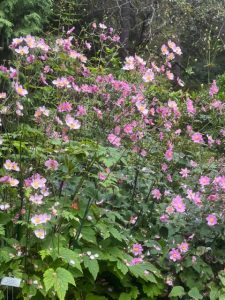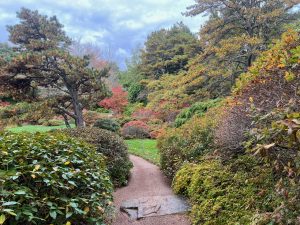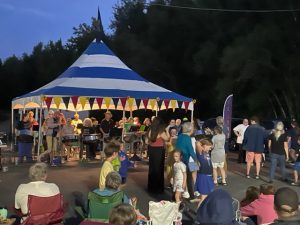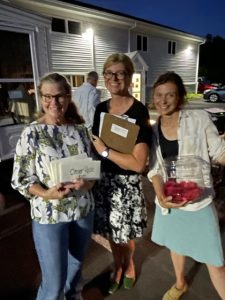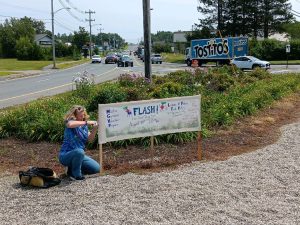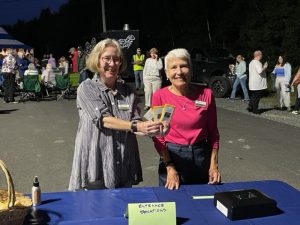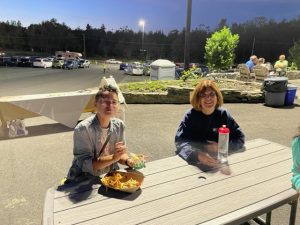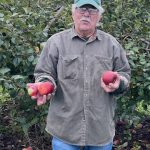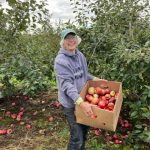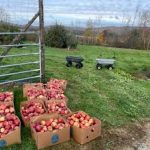Master Gardener Volunteers Newsletter – November 2023
Table of Contents
HEAR FROM YOU! / ASTICOU AZALEA GARDENS / FLASH UPDATE / HARVEST TIME / APPLE GLEANING
Upcoming Dates to Remember!
Nov 8th -9th – Extension Office Closed – Organizational Conference / All Staff
Nov 10th – Extension Office Closed – HOLIDAY
Nov 16th – Planning is underway for our Fall MGV Recognition – RSVP Today!
MGVs, past and present, we want to hear from you!
Did you know that the Hancock/Washington County MGVs are one of the few programs in the state that has an Advisory Committee? We are busy behind the scenes trying to keep the wheels greased on all the ongoing programs and activities in our counties. We want to know what is working for you and what isn’t; what you love and what you don’t; why you are still active or why you’re not (and how we might entice you back). You will be getting a short survey in your email box soon and we are looking forward to hearing from you so we can keep our program vital. Click the Google Form below OR wait until you receive the email, but please take a few minutes to fill it out. It means a lot to us and will help us to plan how best to support you and keep you engaged. GOOGLE FORM
An Autumn Visit with Mary Roper at the Asticou Azalea Garden

by Helen Koch
Master Gardener Volunteer Continuing Education
We are fortunate to live and garden in an area so rich with horticultural resources, and even more lucky when knowledgeable gardeners are willing to share their expertise with us, such as when, on a drizzly day in September, we benefited from a deep dive with Mary Roper, Head Gardener at the Asticou Azalea Garden in Northeast Harbor.
Over 60 years ago, Charles Savage built the garden on family-owned land. Mary described him as a genius loci, a spirit of the place. He combined the rugged beauty of Acadia, three seasons of harmonious color, and the calm of a Japanese garden. “It looks effortless, but it is not.”

Mary has had 34 years to refine Savage’s original concept, recognizing the strengths of the Garden while also making its beauty more fluid, softer, and more subtle. Straight rows became curvaceous paths, and often, she chose the natural and ephemeral over the permanent; in this way, the gardener is continually engaged with the garden, and the garden is constantly being refreshed. For instance, piles of twigs became a twig fence, while, yes, the twig fence does require rebuilding every decade or so. Mary uniquely sees opportunity in adversity, and to her, the problem (piles of twigs) became the solution.
As we walked, Mary presented the various issues that the garden would help to reveal. Climate change is one challenge. A moss-eating fungus grew due to high humidity and damaged the moss garden—“who would have thought drought could be a good thing?” she said. Contrary to what many people think, wind chill affects plants as well as humans. Metabolically alive trees during an exceptionally warm January 2023 were not able to withstand a sudden -15° F shock in February, resulting in over 50% bud death on the cherries and rhododendrons.
I had hoped that Mary would share some secrets regarding rhododendrons, azaleas and other plants in the Ericaceae family. She did not disappoint. Members of this family have ‘wicked’ fine roots; they don’t tolerate compaction so she warned us not to step under their drip lines. On the other hand, azaleas, in particular, are easy to move because the roots aren’t deep—digging down 1-1.5 feet will preserve the root ball. Ericaceous references she likes are Steve Henning (rhodyman.net) and books by H. Edward Reiley.
Ah, the question of pH. Mary takes spot soil tests, especially where species are doing well and where they are not doing well. She has found that a pH of 6.0 is the highest tolerable for azaleas, but even more acidic, down to 4.5 is good. Most compost has a pH of 7.0 and so needs to be acidified for these plants. Cow and goat manure will lower the pH, as will sulfur; but if adding sulfur, let the soil age for a year before using it.
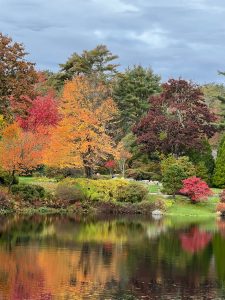 The palette is particularly important at the Asticou Garden. “Exhilarating” color harmonies are maintained for three seasons. While respecting the Asticou collection that began with Beatrix Farrand’s plants, Mary has added uncommon perennials that other people might not know about or use and they must not jar the eye. After finding five examples of orange next to lavender-pink azaleas, she had to concede that this was an intentional combination chosen by the founders, and she now calls it the “Thai colors” section of the garden! Another color challenge is timing, maintaining color through the entire growing season: Japanese maple (Acer palmatum) is aflame in the late fall, but it is too late after this public garden has closed. Instead, Mary uses Acer japonicum, which turns several weeks earlier.
The palette is particularly important at the Asticou Garden. “Exhilarating” color harmonies are maintained for three seasons. While respecting the Asticou collection that began with Beatrix Farrand’s plants, Mary has added uncommon perennials that other people might not know about or use and they must not jar the eye. After finding five examples of orange next to lavender-pink azaleas, she had to concede that this was an intentional combination chosen by the founders, and she now calls it the “Thai colors” section of the garden! Another color challenge is timing, maintaining color through the entire growing season: Japanese maple (Acer palmatum) is aflame in the late fall, but it is too late after this public garden has closed. Instead, Mary uses Acer japonicum, which turns several weeks earlier.
We admired Mary’s new installation of 17 huge granite stones. In the Japanese aesthetic, placement of these boulders would reflect the tradition of “shakkai,” also known as the borrowed view, using landscape features (e.g., background mountains) to frame the garden, drawing the eye to one focal point. This spot in the Asticou Garden has several view lines, and Mary’s chosen pattern of stone placement does not rigidly direct the visitor to choose just one of them. Mary acknowledges Mirei Shigemori, the garden designer (one could also say philosopher) famous for creating the ‘evolved’ Japanese garden. Soon, Asticou gardeners will connect these stones, in an indirect way, by having mountain-top plants—bearberry and heaths—nestled around them.
We even had a chance to ask nuts-and-bolts questions about dealing with invasive species, when to prune, how these sudden weather events can be mitigated (better drainage is one), and why good loam is hard to find. Finally, Mary discussed the importance of growing and propagating your trees on-site. Not only are you creating a genetically diverse population from which to choose, but trees grown locally in native soil will also outlive nursery purchases. Lastly, we don’t fully understand ecosystems; toxins will change the ecosystem and may work against you.
Mary would be happy to have the help of more Master Gardener Volunteers, either gardeners who come to work on a specific project or people who will help with whatever needs attention that day. MRoper@gardenpreserve.org
Concluding our walk, Mary said, “There are all kinds of visitors. We aren’t trying to wow. We are here for people who already have some sort of tie to nature and want to explore.” By now we had all realized that Mary Roper is a true genius loci of this wonderful place “of intentional subtlety.”
For more information on this garden, please see gardenpreserve.org/asticou-azalea-garden
Photos in this article courtesy of Helen Koch and Besty Adams
FLASH! AND THE BEAT GOES ON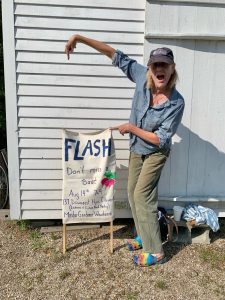
by Patty Persson, MGVAC
A shout out and huge thank you to Loaves and Fishes Food Pantry and Master Gardener Volunteers, led by Betsy Armstrong for hosting the amazing FUNRAISER, FLASH! on August 14th, 2023. Thank you also to our very own MGV FLASH representative, Kate O’Dell who took a risk by agreeing to move the musical event away from their traditional location in Blue Hill to Ellsworth and it paid off!
The event brought new interest to the Master Garden Volunteer program, Loaves and Fishes Food Pantry, and FLASH! With over 150 attendees it was a win /win /win.
Thank you, Sue Baez, for your continued support and to the entire Master Gardener Advisory Council whose commitment to the success of the MGV program once again proved unlimited.
Stop by in person to share your gratitude with the local businesses who supported our raffle with their generous donations: The Thirsty Whale, MDI Ice Cream, Frost Farms, Flexit, Zeppa’s, Serendib, Seal Point Farm, Mainescape, and Crocker House!
Photos Courtesy of Patty Persson, MGV, and Sue Baez
Master Gardener Volunteer Program – It’s Harvest Season!
Harvesting Today and Growing a Healthier Tomorrow
by Patty Persson
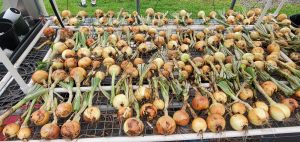
With the 2023 Harvest in full swing, the numbers are looking brighter and gardens are more productive than ever! Over the past few years in Hancock County alone, the Master Gardener Volunteers have contributed over 5000 hours of volunteerism and distributed over 10,000 pounds of produce grown and gleaned at up to 14 different garden sites. According to the Maine Cooperative Extension Office 2022 Annual Report, that equates to a monetary value of $161,280.00. That’s no small potato!
While the scope of the Master Gardener Volunteer program encompasses a wide array of gardening tips, tools, and education, the chapters on Maine Food Systems and Food Security, and Volunteering have given me the deepest understanding and appreciation for the enormous amount of food-based need being addressed by the Master Gardener Volunteers. Here is just a sampling:
The Blue Hill Community Garden, under the leadership of Master Gardener Volunteer, Rachel Emus, continues to thrive with 100% of its harvest picked by community members or donated to local food security programs. Out on the peninsula, under the stewardship of Master Gardener Volunteer, Lisa DePasqual, the Brooklin Community Garden is firmly integrated into the food security system with weekly donations to the Magic Food Bus and local crop swap. The educational component encompasses 20% of Lisa’s time with outdoor garden classes for the summer campers and students at Brooklin School. Way to grow small community garden teams!
Sweet Haven Harvest for Hunger Farm and Hancock Community Garden are two of the largest Master Gardener Volunteer program sites in Hancock County growing, gleaning, and distributing over 1,630 pounds of fresh produce to the local food banks or directly to families in need. Not to be overlooked, our very own Extension Office Teaching Gardens under the leadership of Marjorie Peronto donated 449 pounds in 2023!
That’s no small potato!
Keep up the great work MGV’s!
Apple Gleaning Success!
On Monday, October 23rd, about a dozen Master Gardener Volunteers joined in with the nearly 50 apple gleaners from across the county! It was a beautiful sunny morning, full of happy folks, picking apples for a wonderful cause. Nearly 7,700 lbs of apples were gleaned and distributed to food pantries, soup kitchens, backpack programs, and other organizations. Thank you to all who came out to help!
Photos Courtesy of Sue Baez
DO YOU KNOW
-Someone who inspires your gardening?
-Someone who is making a difference environmentally, food security, climate change mitigation – whether quietly
or loudly in one small plot or a large project?
IF SO
– We want to know, here is one way to tell us
MGVnewsletterinput@gmail.com
Our MGV newsletter is for and about Washington/Hancock MGV people, projects, and the community. MGVnewsletterinput@gmail.com, was established as a way for readers to recommend interesting topics or people for future articles, provide comments, or ask questions. It has been a little used resource, but for some of you, it has been a way to not only give input to the newsletter committee but also to make suggestions for Continuing Education and MGV projects. Try it!
This month’s newsletter sent by Sue includes articles from our new “Communicate with MGV’s” task force. We’d like the next edition to feature your suggestions and articles about gardeners and gardens. MGV’s, please contact us at MGVnewsletterinput@gmail.com with your ideas.
Thank you from
Betsy Adams, Jan M., Jane, Wendy, Linda, Mary D., Mary H., and Rita

